[For more information regarding the Toyota Mirai, see Clean Car Comparison: Model S vs. Mirai.]
Since Toyota’s announcement of the September release of its hydrogen-powered Mirai sedan, there’s been a lot of press and social media chatter regarding this ground-breaking new vehicle. Hydrogen proponents and environmentalists far and wide are hailing this innovative car for its clean exhaust and edgy design. Toyota even calls it a “turning point.”
The Religious Debate
However, there’s a long and ongoing debate within the circles of automobile enthusiasts and clean energy advocates regarding hydrogen fuel cell cars. On one side of the issue are fans of all-electric vehicles, like the Nissan LEAF and Tesla Model S, who think hydrogen is a half-baked and inefficient tech that may never be truly economical, clean, or competitive.
Brian Cooley, when hosting an episode of CNET on Cars, said the Mirai is being released “At a time when most people think hydrogen fuel cell is either yesterday’s failed experiment or distant tomorrow’s technological witch.”
Conversely, hard-core hydrogen proponents believe that electric cars (EVs) are mostly hype that are based on trendy sex appeal, technophilia, and the impulses of ignorant tree huggers. EV opponents also cite the replacement expense and relatively short lifespan of batteries, which don’t last as long as internal combustion engines, but are much less expensive to operate and maintain.
The Mirai, which in Japanese means “future,” is a bold and controversial step for the world’s number one automaker. I’m generally a fan of Toyota’s vehicles. I got car envy when the company’s Prius first hit the streets, and have admired the quirky and ubiquitous hybrid as a powerful statement of how battery technology can improve—and eventually replace—internal combustion engines.
High Costs, Limited Availability
But there are several problems with the current Mirai. Most notable is acquisition cost: It will start at $58,000. This pricing is more befitting one of Toyota’s other brands, Lexus. In fact, for roughly the same cash ($61,300), one could get their hands on the significantly more luxurious Lexus GS 450h, a hybrid vehicle sporting 34 MPG, 338 HP, and acceleration from zero to sixty in only 5.6 seconds. The Mirai delivers only 153 HP and does the 0-60 jaunt in a sluggish nine seconds.
In fact, for those who care more about performance than saving the environment, the Corvette Stingray is available for only $54,000, $4,000 less than the Mirai. More expensive than a Corvette? Really, Toyota?
Regardless of relative values, few middle class consumers will be able to afford or justify a four-seat sedan costing $60K.
Also, only 200 units of this limited-production vehicle will be made available in California in the fourth quarter of 2015. Toyota reported that it anticipates only 3,000 Mirais will be on American roads by the end of 2017. In a country where 16.5 million vehicles are sold each year, the Mirai is arguably a media stunt on the part of Toyota. In fact, some experts argue that Toyota is simply trying to satisfy government fuel economy regulations so it can continue to sell its gas guzzling trucks and SUVs.
Another problem with the Mirai will be fuel prices, which—at the very few fueling stations available—will be nearly identical to that of gasoline. Temporarily, however, fuel will be…free. That’s right. But guess why. According to Motor Trend, “[Fuel will] be free because presently, there’s no certified way to meter hydrogen’s dispensing.” And you thought Toyota was just being generous.
“What happens when the shoe drops after three years and Mirai drivers start paying for their fuel? At the moment, hydrogen is costing between $9 and $10 per kilogram; assuming it isn’t subsidized, the Mirai could end up costing about twice per mile what the Prius v currently does,” reported Motor Trend.
Wow. Twice as expensive to fuel than a Prius v (which gets 44 MPG). Is this really progress?
Lack of Fueling Stations
There’s also the problem of the lack of hydrogen fueling stations in the U.S. According to AutoBlog.com, in early 2014, Toyota’s Lexus division “had to retract a pro-hydrogen ad…when it was discovered that the ad made incorrect claims about [hydrogen], including that there were ’20 states with an established infrastructure for hydrogen [refueling].'”
There are actually only three states with hydrogen fueling stations in the United States. And two of the three feature only a single station. The folks at Toyota and Lexus apparently can’t be bothered with the facts; they’re too busy revolutionizing the world with impractical, ridiculously expensive cars.
In the words of a colleague from Los Angeles who’s a senior advisor for electric mobility and battery storage, “The thing that dawned on me when I first saw the Mirai was: This is the end of Toyota.” According to a friend in Portland, Oregon who owns two Nissan LEAFs and an electric bus, the Mirai “…may become the Betamax of electric cars.”
The Dialog
I recently commented on a post from a Facebook friend’s timeline regarding the forthcoming Mirai. The following exchange features Thomas Earl Moore, a project scientist at NASA Goddard and Tesla Model S owner.
Thomas Earl Moore: There are only about 30 hydrogen filling stations in existence right now, all in southern Calif. versus 300 Supercharger stations [for Tesla vehicles] all over the world, thousands and thousands of public charging stations, and millions of potential home chargers.
At present, you can only take a round trip to half your range in a hydrogen car, and will have to return to one of those stations because you are never going to get hydrogen delivered to your home, because of what you also pointed out. The stations cost $2-3M a pop to build, so the hydrogen sellers are looking for public funding of them.
Curt Robbins: Hi Thomas. Are there really 30 hydrogen refueling stations? I checked the California Fuel Cell Partnership website. 60 were listed, but—upon further inspection—most were under construction or planned. Only nine were actually available for use.
TM: Curt, I was guessing based on recent reading. I thought the claim was somewhat higher than that, but it’s interesting that it’s still mostly wishful thinking!
CR: Thomas, I was shocked by the low number too. I know that California’s Governor Jerry Brown, in 2013, signed a law that funds $20M a year to build 100 hydrogen fueling stations in Cali by 2024 (not exactly an aggressive construction schedule; only about nine stations per year).
With all due respect, regarding Duncan Fowler above saying “locally is definitely the key word”: It’s really not. The only true math is “well-to-wheels,” considering the entire power generation food chain.
All electricity generated via coal is crap in terms of carbon footprint, so I agree with anyone who suggests that an EV that is charged from a coal power plant is of little environmental benefit (burning coal is the dirtiest form of power in the world). To Mr. Fowler’s point, a coal-powered EV delivers very little benefit to one’s local environment because the coal-burning power plant x-number of miles away pumps poisonous exhaust into the air, which then creates smog, acid rain, and other nasty side effects that directly impact your home, community, and neighboring crops (and eventually travel to other communities and combine with the exhaust from other dirty power plants).
In fact, according to the Union of Concerned Scientists, “Coal plants are the nation’s top source of carbon dioxide [CO2] emissions.” Even more than cars. If these plants are generating the electricity that fuels electric cars, we still have a major problem.
Sorry for the long post, but this topic is neither trivial nor simple.
Better ≠ Best
Brian Fowler: I give Toyota credit for taking a step in WHATEVER direction in an effort to decrease the need to burn fossil fuels, and whatever technology comes out on top, be it electric or fuel cell, or whatever, it is something the entire planet needs, the sooner the better.
TM: Right, Brian. They got the Prius right for its time and who knows, someone may figure out how to make hydrogen work better than it currently does. My suspicion is the Japanese are trying to avoid building more nuke plants….
CR: I agree, Brian, that the world simply needs to be rid of fossil fuels. Considering melting ice caps and other evidence of climate change, you’re certainly correct in wanting this sooner rather than later.
However, just because an approach (hydrogen, or Mirai’s implementation of it) is better doesn’t mean it’s our best option. Many hydrogen pundits suggest that forthcoming (currently in development) hydrogen production and storage technologies will revolutionize the industry and make it a clearly superior option for all types of vehicles. If so, I’m all for it.
But I doubt Tesla Motors would bet the farm on a $5 billion battery factory in Reno (that won’t be complete until 2017) if this was the case. The company certainly has the resources to purchase emerging technology companies or license patents. I’m not claiming Tesla is perfect, but they are very focused, intelligent, and determined. I don’t the company would go the electric-only route if it was inferior to hydrogen.
Hard Numbers
Given current and foreseeable tech, don’t give Toyota too much credit. As part of my book research, I just got off the phone with Wally Rippel, who worked on GM’s EV1 and the Tesla Roadster. When the efficiency loss not only for the power grid, but also for storage in the EV battery and other mechanisms is considered, EVs have a 70% overall efficiency. When one compares 70% full energy lifecycle efficiency in an EV to the 20% energy lifecycle efficiency of a hydrogen vehicle (current tech and infrastructure, which the Mirai leverages), the reality comes to light.
Many argue that Toyota is simply playing the regulation game (with California’s CARB mandate and the U.S. Government’s CAFE standards) and producing the Mirai so it can continue to sell it’s entire vehicle fleet into the largest car market in the U.S.: California. I won’t argue the nuances of that issue because I’m a technology writer and consumer advocate, not a political scientist or marketing strategist.
But on the technical side, if you do an objective well-to-wheels analysis of the situation (or, as Mr. Rippel suggested to me, a “wind-to-wheels” consideration), the only benefit of the Mirai is no local emissions and a somewhat cleaner—but not truly clean, like solar or wind—energy source in the form of hydrogen.
Since most hydrogen in the U.S. is produced from methane, a natural gas, ownership of the Mirai still consumes fossil fuels. In fact, in the total energy lifecycle, hydrogen from methane produces about 50% of the CO2 made from the burning of gasoline in an internal combustion engine (according to Tim Lipman, co-Director of UC Berkeley’s Transportation Sustainability Research Center).
In its current state, the Mirai—and all hydrogen fuel cell vehicles—still produce CO2 when the method by which their hydrogen fuel is produced is taken into account. Even though it’s only half of what is released by conventional cars, it’s still significant. Lesson: Don’t believe the hype.
I’ll save the rest for the book, lest this get even longer. But it again emphasizes that achieving truly sustainable energy for personal transportation is complicated and more than meets the eye. Fueling the Mirai will cost as much or more than gas-powered vehicles and the car will be priced at $60K when it debuts in September. I don’t see how this is a move in the right direction.
Only in Los Angeles
TM: With a bit more research I find there are a dozen or so stations in the U.S. [Moore then linked to a Wikipedia article regarding hydrogen fueling stations in the United States].
CR: Hi Thomas. According to the Department of Energy, there are 13 hydrogen refueling stations in the U.S., but with 11 in Southern California and only two outside the state: One in Wallingford, Connecticut and another in Columbia, South Carolina. And that’s it.
Assuming these stations are accessible, we have 13 hydrogen fueling stations in a nation with 254 million passenger vehicles (according to a 2007 U.S. Department of Transportation study; one blogger’s unofficial estimate claims 305 million as of 2014). The state of California alone has nearly 10,000 gasoline stations.
Yet, the Mirai goes on sale in September. But how is this supposed to work? As you pointed out, Thomas, an EV can be plugged into any electrical outlet in the United States (tens of billions of them). The ubiquity of the charging locations for EVs is clear. Electric vehicles have a monumental advantage over hydrogen cars in this respect.
I’ll again emphasize “same team,” that we’re all trying to rid ourselves of fossil fuels and adopt clean, sustainable energy for our homes and cars. But my brain cannot wrap around the present-day practicality of hydrogen fuel cell vehicles. If someone can convince me otherwise—via the Mirai or any hydrogen car—please, I want to be educated.
So far, no one has been able to do that.
Curt Robbins is author of the following books from Amazon Kindle:

- Home Theater for the Internet Age ($9.95)
- Understanding Personal Data Security ($4.99)
- Understanding Home Theater ($4.99)
- Understanding Cutting the Cord ($4.99)
- Understanding Digital Music ($4.99)
You can follow him on Twitter at @CurtARobbins, read his automotive-related blog posts on CarNewsCafe, his AV-related posts at rAVe Publications, and view his photos on Flickr.
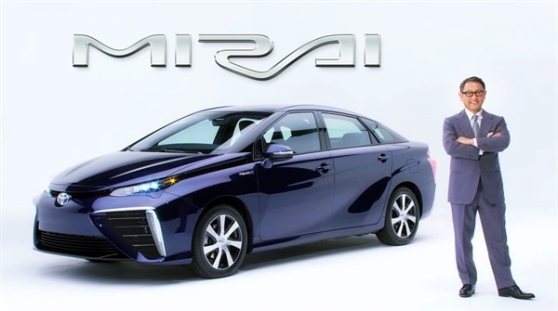
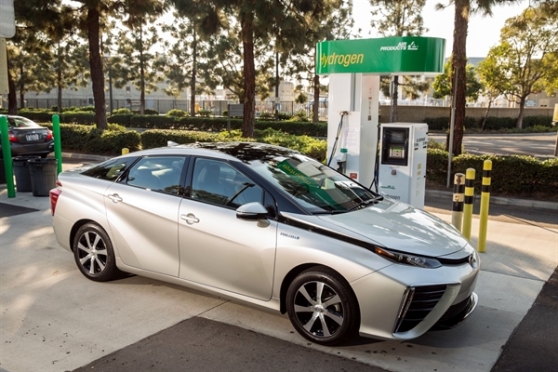
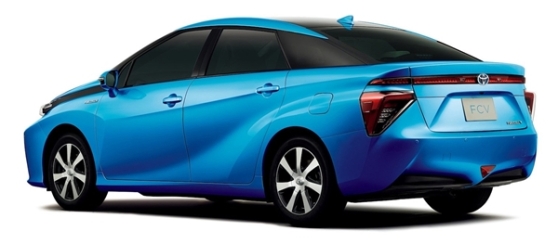
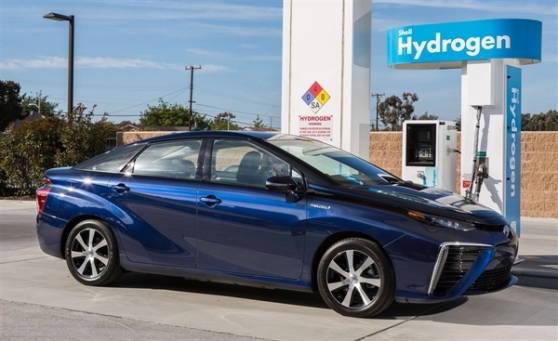
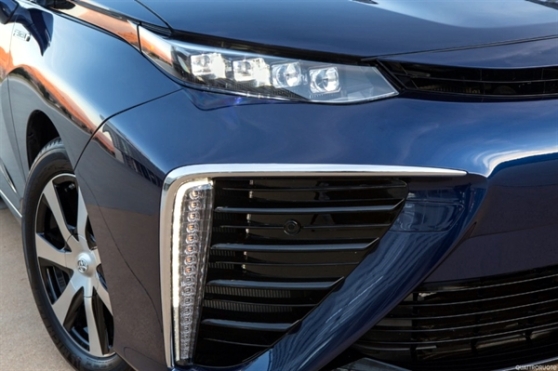
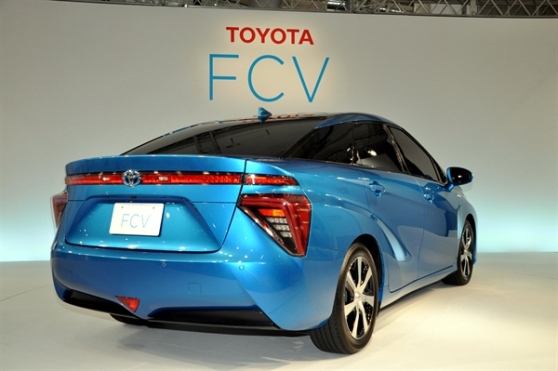
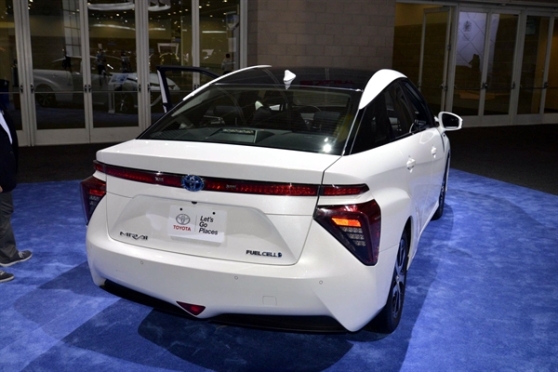

In the story you state that Toyota’s goal is to sell 3,000 per year two years after the vehicle has rolled out. Yet, you spend about 1,000 words pretending it has some other larger goal that will fail miserably and is a bad idea. How many battery-electric vehicles in the US do that well (sell over 3,000 units per year in the US)? Two by my count. The Leaf and the Model S. i3 should do it next year if all goes well. Apply all the same government support and tax incentives to Toyota’s or Honda’s or Hyundai’s fuel cell vehicles and it is hard to see how they don’t sell enough to meet their very conservative sales goals. Any why say Toyota (Honda and Hyundai) are doing this to sell “its fuel guzzling trucks and SUVs?” Toyota sells more Prius vehicles than any model truck or SUV. The Prius is the top selling green car and still outsells BEVs 2 to 1 in the US.
LikeLike
John, the article is really about the infrastructure behind hydrogen fuel cell technology. No one can debate that hydrogen cars don’t work. They work well. It’s always the same thing since 2008. Battery technology is increasing faster than hydrogen and FCV have. Today’s Roadster 3.0’s battery pack is 30% more energy dense than the original cells. I never hear numbers like these coming from gasoline cars, nor even diesel, and even less hydrogen.
The devil is in the detail.
LikeLike